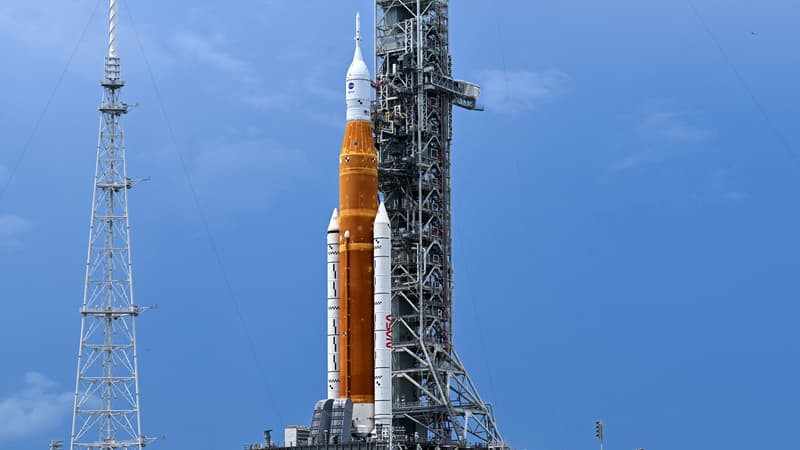The launch of NASA’s new lunar rocket, the world’s most powerful, was canceled on Monday due to a technical problem, but could still take place during the next launch window on Friday, a US space agency chief said.
Fifty years after the last Apollo flight, the Artemis 1 mission should mark the start of the US program to return to the Moon, in order to allow humanity to reach Mars.
“We keep the option for Friday,” said Mike Sarafin, head of the mission, at a press conference, without wanting to go any further.
There is another shooting window on Monday, September 5
He indicated that the analyzes of the NASA teams will be resumed on Tuesday to have a better idea of the time needed to solve the problems that have arisen, particularly in one of the engines. If liftoff does not take place on Friday, there is another window of opportunity on Monday, September 5. Then the possibility of takeoff is interrupted until September 19.
It is the first time that the orange and white SLS rocket, 98 meters high, must fly. Therefore, NASA officials insisted all weekend that it was a test flight and that technical unforeseen events could happen at any time, despite several dress rehearsals in recent months.
“I’m a little disappointed, but … I’m not surprised,” astronaut Stan Love, who has worked on the program for two decades, told reporters in Florida.
“It’s a new vehicle, it has millions of parts, they all have to work perfectly.”
A technical problem in one of the engines.
Launch was originally scheduled for 8:33 am local time (2:33 pm Paris time) from Launch Pad 39B at the Kennedy Space Center. The filling of the rocket’s tanks with its ultracold fuel (liquid hydrogen and oxygen) had begun an hour late due to the risk of lightning. A leak then caused a pause during the filling of the main stage with hydrogen.
Around 7 am local time, a new and decisive problem appeared: one of the four RS-25 engines, under the main stage of the rocket, could not reach the desired temperature, a necessary condition to launch it. up. A problem with the valve was also found, Mike Sarafin said.
The countdown was then stopped, and after more than an hour of waiting, NASA launch director Charlie Blackwell-Thompson made the final decision to cancel. The window of opportunity was only two hours long and there was not enough time to keep trying to fix the problem.
“We won’t take off until everything is ready,” NASA chief Bill Nelson said shortly after the cancellation. Engineers “will get to the bottom of the problem, fix it, and we’ll fly,” he said.
orbiting the moon
Thousands of people had made the trip to see the show, including US Vice President Kamala Harris. The mission is to propel the unmanned Orion capsule into orbit around the Moon, to verify that the vehicle is safe for future astronauts, including the first woman and first person of color to walk on the lunar surface.
The main objective of Artemis 1 is to test the heat shield of the capsule, which will re-enter the Earth’s atmosphere at almost 40,000 km/h, and at a temperature half that of the Sun’s surface.
Instead of astronauts, there will be mannequins on board, equipped with sensors that record vibrations and radiation levels. Microsatellites will also be deployed to study the Moon, or even an asteroid. The capsule will venture up to 64,000 km behind the Moon, farther than any other habitable spacecraft to date.
astronauts in 2024
A total mission failure would be devastating for a rocket with a huge budget ($4.1 billion per launch, according to a public audit) and several years behind schedule (ordered in 2010 by the US Congress for an initial liftoff date of 2017).
After this first mission, Artémis 2 will carry astronauts to the Moon in 2024, without landing there. An honor reserved for the crew of Artemis 3, in 2025 at the earliest. NASA then wants to launch about one mission per year.
The goal: to establish a lasting human presence on the Moon, with the construction of a space station in orbit around it (Gateway), and a base on the surface. There, humanity must learn to live in deep space and develop all the technologies necessary for a trip to and from Mars.
A multi-year journey that could take place “in the late 2030s,” according to Bill Nelson. But before that, going to the Moon is also strategic, against the ambitions of competing nations, in particular China.
Source: BFM TV


